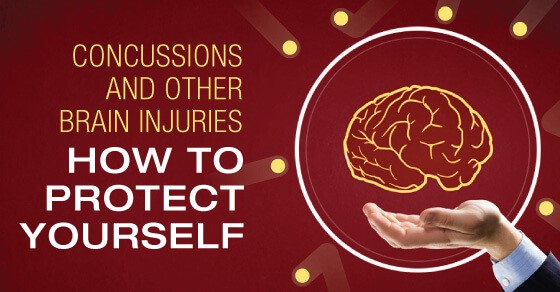
When is a bump on the head more than just a bump on the head?
Each year, over 2.5 million people are treated in hospital emergency rooms for head injuries of varying degrees. Nearly 80% of these are treated and released; of the remaining 20%, some suffer severe, long-term injuries, and some die.
The anatomy of the human brain
Most of us know that the human brain is divided into two halves, or hemispheres. The left side of the brain is responsible for such attributes as logic, mathematics, and language, while the right side is responsible for imagination, motor skills, and emotions. We often speak of someone as being “right-brained” or “left-brained,” as a means of describing their talents and temperament, but in truth both sides of the brain work together. The brain is protected by the bones of the skull, and in the space between the brain tissue and skull bones, tissue and fluid serve as cushioning and further protection of our most vital organ. Damage to the brain can affect motor skills, thought processes, and even our emotions and personality.
Types of brain injury
A brain injury is caused by a blow or jolt to the head that causes the brain to strike against the skull, or by an event that penetrates the skull. Most of us use the common term “concussion” to describe such an event, but there are varying degrees of injury:
- Concussion – trauma to the brain from an impact or sudden momentum or movement change
- Contusion – result from a direct impact to the head, causing bleeding (bruising) on the brain
- Coup-Contrecoup – trauma resulting from a force strong enough to cause damage both at the site of impact and on the complete opposite side of the brain
- Diffuse Axonal – result from a shaking or rotational force, in which shearing of the brain tissue occurs
- Penetration – trauma from an impact that breaches the skull and introduces skin, hair, and fragments into the brain matter
Who suffers a brain injury, and why?
Most of us think about brain injury as the result of a traffic accident or sports injury. While traffic accidents account for 14% of TBIs and blows to the head (as occur in sports injuries) account for 15% of TBIs, by far the largest portion of brain injuries stem from falls – 40%. Falls are the cause of more than half (55%) of brain injuries in children ages 0-14, and in 81% of adults aged 65+.
Protecting Your Brain
Anyone can suffer a brain injury, so taking precautions to protect your brain is important.
- Wear your seatbelt
- Wear a helmet when riding a bike, motorcycle, or scooter
- Wear a helmet for contact sports such as football and hockey
- Wear a helmet for such activities as skateboarding, skating, and skiing
- Be extra careful in snowy and icy weather
- Use a hard hat if you work in construction
- Be aware of slip and trip hazards in your home (electrical cords, throw rugs)
Your brain is arguably the most important organ in your body – it’s the command center for involuntary body functions such as breathing and heartbeat, where your motor skills originate, and where your intelligence and personality lie. Protecting this vital organ should be a top priority no matter what activity you engage in, particularly since damage due to a brain injury can be permanent or even fatal.
If you or someone you love has suffered a brain injury as a result of someone else’s negligence, speaking with an attorney with experience in medical injury cases can protect your legal rights. For more information, contact Gerling Law – it won’t cost you anything to see if we can help!
